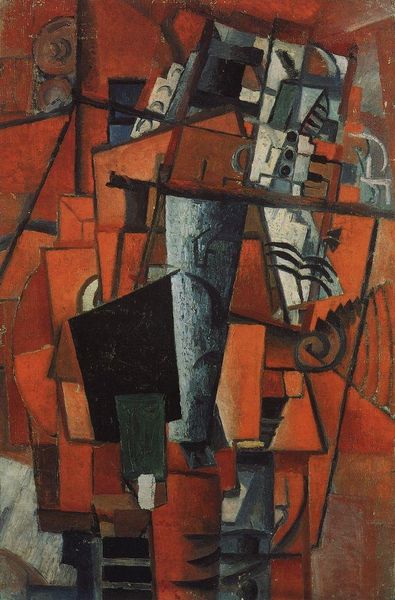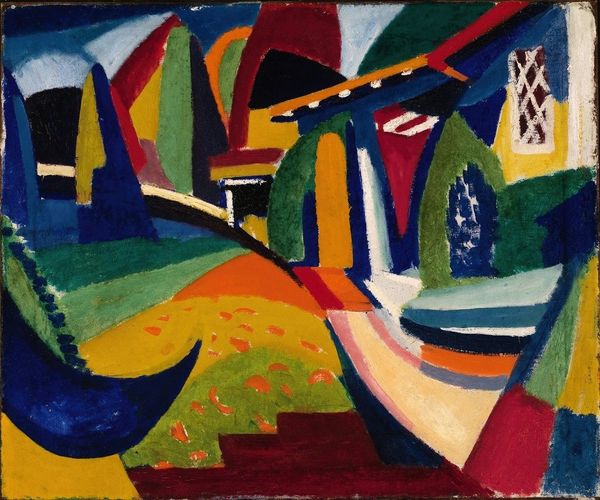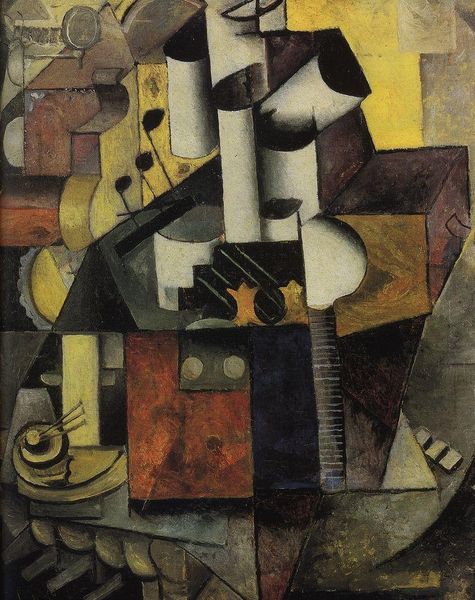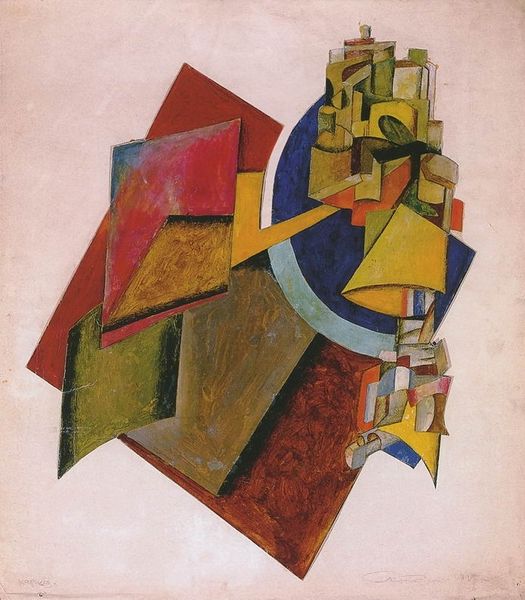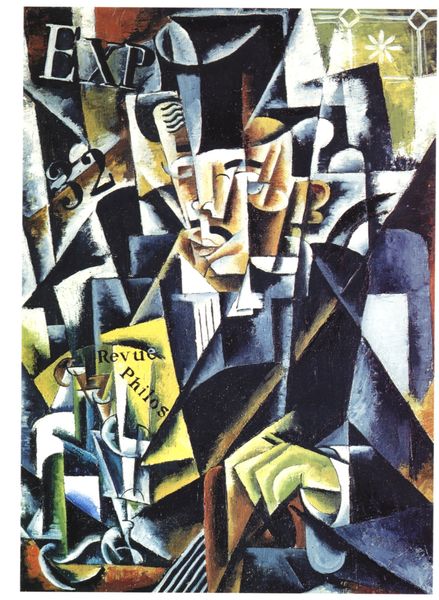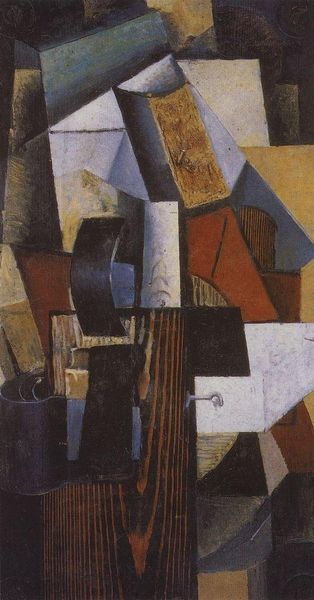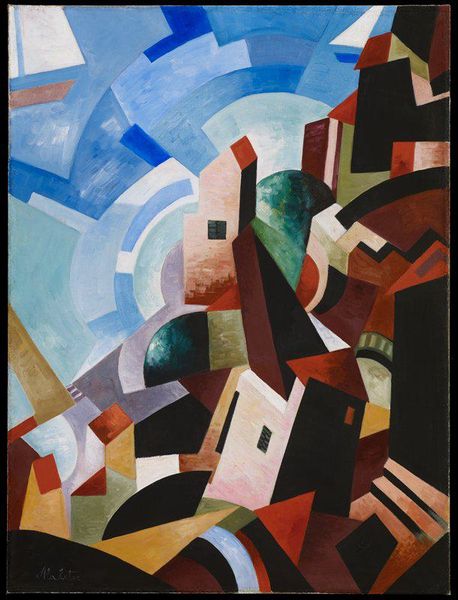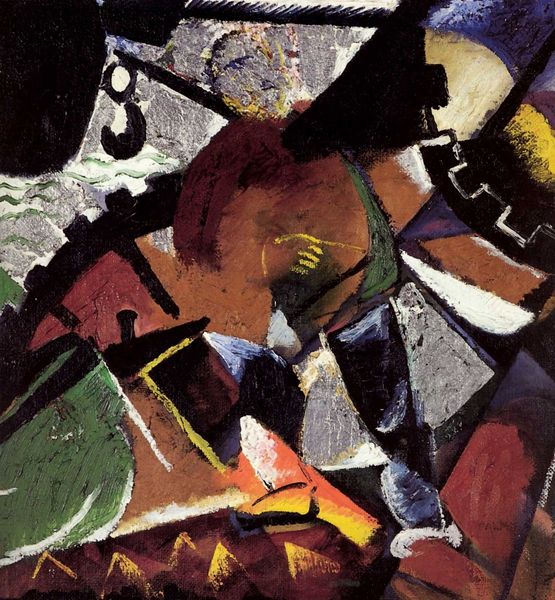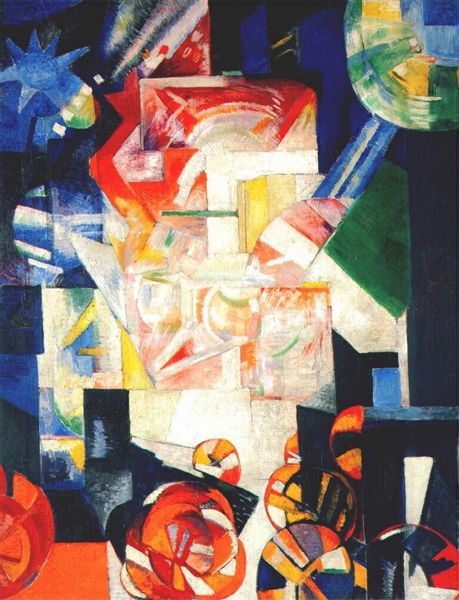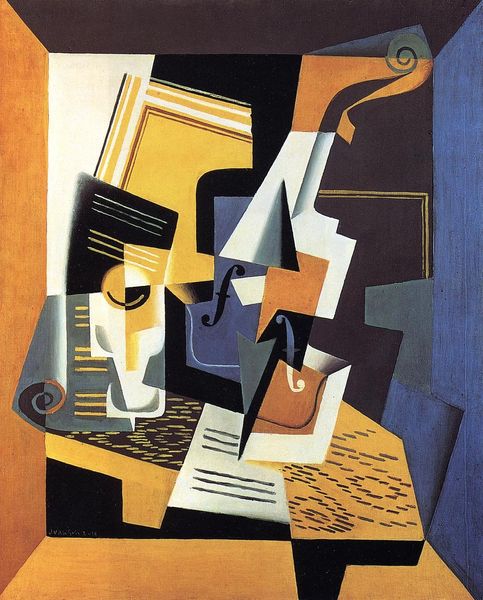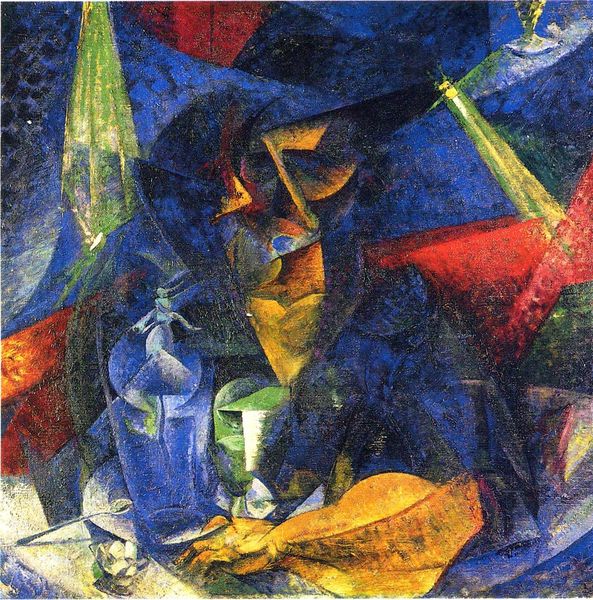
oil-paint
#
oil-paint
#
geometric
#
cityscape
#
futurism
Copyright: Public domain US
Curator: Just ahead is Ottone Rosai's "Scomposizione di una strada," an oil on canvas that dates to 1914. It's a fascinating example of early Futurist explorations. Editor: My first thought is chaos. It's like the world is shattered and then reassembled with a complete disregard for order. All these clashing geometric shapes – it's very dynamic, but also quite unsettling. Curator: Indeed. Rosai embraced the Futurist fascination with speed and dynamism. Look how he represents the city not as a stable entity, but as something fragmented and in constant flux. It reflects the urban experience in the early 20th century, which saw an incredible population surge. Editor: The colors amplify that feeling. You've got earthy browns and ochres juxtaposed against blues, and this jarring orange hue—none of them seem to blend; they collide instead, maybe echoing the noisy and frenetic life in a burgeoning city. The lack of any stable visual anchors also plays into the idea of displacement, too. Curator: Precisely! And remember, this work emerged in pre-World War I Italy. Futurism was not just an artistic movement, but a social and political one. It was closely associated with radical change and even violence. While not explicitly propagandistic, paintings like this captured the pervasive feeling of upheaval. This work predates Rosai’s eventual service during World War I as well, providing an even more intimate connection with his changing political outlook. Editor: And is that a building reduced to geometric suggestion near the upper center? What do you make of that, the architecture seemingly melting amidst the noise? Curator: I would argue that architecture symbolizes both tradition and constraint in this context. In breaking down its conventional depiction, Rosai challenges established social norms. Also, bear in mind Futurism rejected the past outright; there was no space for it in their bold, mechanized future. Editor: So, this disintegration—it isn’t simply about capturing a fleeting moment but rejecting permanence altogether. A city not of monuments but movement, and continual, necessary revolution. Very compelling. Curator: Precisely. Viewing the social and cultural currents of pre-war Italy, this artwork delivers much insight regarding the role of Futurism. Editor: It does. Even through today's eyes it reveals a continued interest of progress within disruption. Thanks to this context, I perceive it now as a bold visual statement reflecting a time of unprecedented change.
Comments
No comments
Be the first to comment and join the conversation on the ultimate creative platform.
